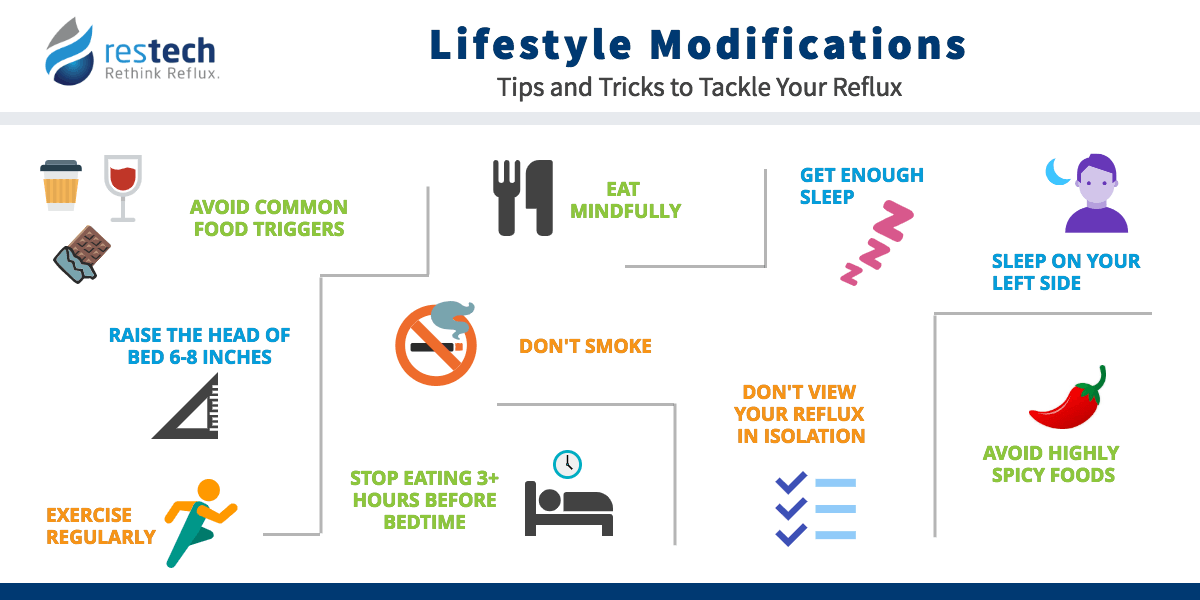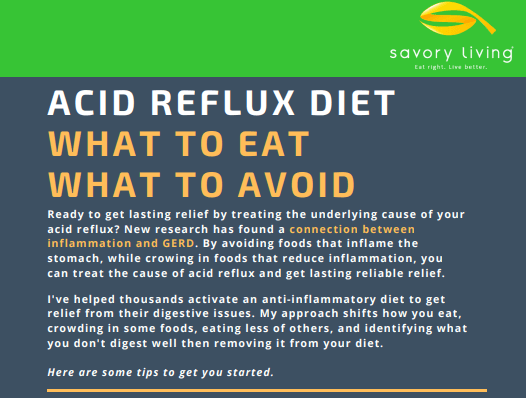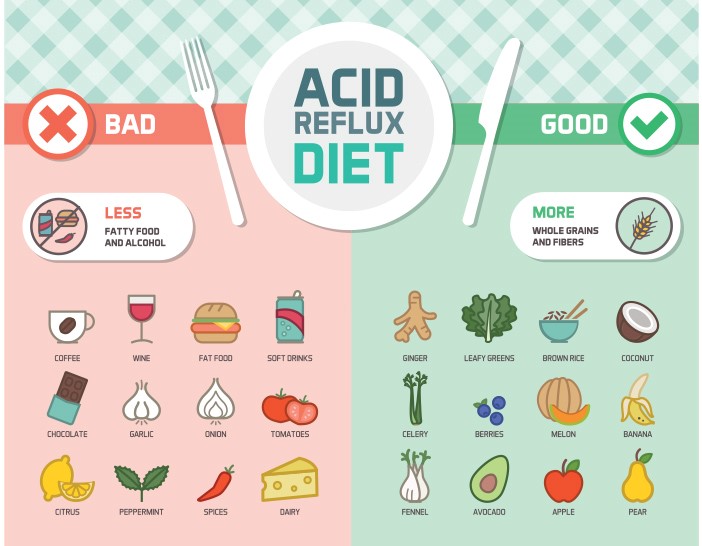Discover simple and effective diet and lifestyle tips to ease acid reflux and finally find relief from uncomfortable symptoms.
Table of Contents
- Welcome to Heartburn-Relief Town!
- Understanding the Tummy Troubles
- Food Friends and Food Foes
- The Food Plate Makeover
- Timing is Everything
- Get Moving, Stay Upright!
- Snooze Without the Burn
- Medicine Cabinet: What’s Inside?
- The Trouble with Tight Pants
- Talking to the Adults – When to Seek More Help
- Hey, Remember This!
- FAQs – Your Burning Questions Answered
Welcome to Heartburn-Relief Town!
Hey there! Welcome to Heartburn-Relief Town, where we’re going to help you navigate the pesky world of acid reflux and find some relief from that uncomfortable heartburn. Are you ready to learn how to tackle this tummy trouble?
Acid reflux is like when your stomach says, “Oops! I didn’t mean to send that back up!” causing that burning feeling in your chest. But don’t worry, we’ve got some tips and tricks up our sleeves to help you feel better.
Understanding the Tummy Troubles
Have you ever heard about acid reflux? It’s a fancy way of saying that you might feel a burning sensation in your chest or throat sometimes. When acid from your stomach goes back up into your esophagus, the tube that carries food from your mouth to your stomach, it can cause this uncomfortable feeling. But wait, there’s more! Sometimes, acid reflux can be a bit more serious and doctors call it GERD, which stands for Gastroesophageal Reflux Disease. It’s like the big brother of acid reflux, but don’t worry, we’ve got some tips to help you understand and manage these tummy troubles.
Food Friends and Food Foes
When it comes to dealing with acid reflux, what you eat can either be your friend or your foe. Let’s break down the foods that can help soothe acid reflux and those that can make it worse.

Image courtesy of www.restech.com via Google Images
Friendly Foods
Some foods can actually help ease the discomfort of acid reflux. Foods like oatmeal, ginger, and bananas are known to be gentle on the stomach and may provide relief. Eating fiber-rich fruits and vegetables can also be beneficial in managing acid reflux symptoms.
Fierce Foes
On the flip side, there are certain foods that can trigger or worsen acid reflux. Spicy foods, fried foods, chocolate, and citrus fruits are notorious for causing heartburn in some individuals. It’s best to steer clear of these trigger foods if you’re prone to acid reflux.
By being mindful of what you eat and making smart food choices, you can help alleviate the symptoms of acid reflux and keep your tummy happy.
The Food Plate Makeover
When it comes to managing acid reflux, what you put on your plate can make a big difference. By making smart food choices, you can help prevent those uncomfortable flare-ups. Let’s dive into how you can give your food plate a makeover to keep acid reflux at bay.
Balance is Key
When planning your meals, aim to include a variety of foods from all the different food groups. Opt for lean proteins, whole grains, fruits, and vegetables to create a balanced plate. Avoid heavy, greasy dishes that can trigger acid reflux and opt for lighter, healthier options instead.
Watch Your Portions
It’s not just what you eat, but how much you eat that matters. Eating large meals can put extra pressure on your stomach, leading to acid reflux. Try to eat smaller, more frequent meals throughout the day to keep your digestion on track and prevent heartburn.
Limit Trigger Foods
Some foods are known to be more likely to cause acid reflux. These include spicy dishes, citrus fruits, caffeine, and chocolate. While you don’t have to cut them out entirely, it’s a good idea to limit your intake of these trigger foods to help manage your symptoms.
Timing is Everything
When it comes to dealing with acid reflux, lifestyle changes play a crucial role in finding relief. And one key aspect of these changes is the timing of your meals. Let’s delve into why timing is so important.

Image courtesy of www.savoryliving.com via Google Images
The Right Time to Eat
It’s essential to give yourself ample time between your last meal of the day and bedtime. Eating too close to bedtime can cause stomach acid to travel back up into your esophagus while you’re lying down, leading to heartburn and discomfort. Try to finish dinner at least two to three hours before hitting the sack.
Avoiding Late-Night Snacking
While a late-night snack might seem tempting, especially when you’re feeling peckish before bed, it’s best to resist the urge. Snacking right before bedtime can trigger acid reflux symptoms as you lie down to rest. If you must have a little something, opt for a light, reflux-friendly snack like a few whole-grain crackers or a small piece of fruit at least an hour before bedtime.
Remember, timing your meals and snacks strategically can make a significant difference in managing your acid reflux symptoms. So, pay attention to the clock and give your body the time it needs to digest before you hit the hay.
Get Moving, Stay Upright!
Did you know that the way you move and sit can actually affect your tummy and cause that uncomfortable acid reflux feeling? Let’s dive into how staying active and upright can help you manage acid reflux better.
Stay Active, Stay Healthy
When you play outside, run around, or do your favorite sport, your body is happy! Staying active not only makes you stronger and happier, but it also helps keep your tummy in check. When you move, you help your food digest better, which can reduce the chances of acid reflux coming up to say hello.
Sit Up Straight, Feel Great
Whether you are at your desk doing homework or watching TV, sitting up straight is super important. When you slouch or hunch over, your tummy gets squished, making it easier for acid to sneak up into your throat. So, remember to sit tall and keep that tummy happy!
By adding more movement to your day and paying attention to how you sit, you can help keep acid reflux at bay. So, go out and play, and sit up straight to keep that tummy happy and healthy!
Snooze Without the Burn
Are you tired of waking up in the middle of the night with a burning sensation in your chest? Do you wish you could snooze peacefully without that uncomfortable feeling of acid reflux? Well, we’ve got some tips to help you sleep comfortably and avoid the burn!

Image courtesy of www.pinterest.com via Google Images
Sleeping Position 101
Believe it or not, the way you sleep can affect your acid reflux. To snooze without the burn, try sleeping on your left side. This position can help keep stomach acid from creeping up into your esophagus, giving you a more restful night’s sleep.
Pillow Power
Adding an extra pillow under your head can also help prevent acid reflux while you sleep. By keeping your head elevated, gravity can work its magic and keep stomach acid where it belongs – in your stomach!
No Midnight Snacks
Avoid eating right before bed. Late-night snacking can trigger acid reflux when you lie down. Try to finish your last meal at least two to three hours before hitting the hay to give your stomach enough time to digest.
Lights Out for Electronics
Turn off those screens before bedtime! The blue light from phones, tablets, and computers can disrupt your sleep and lead to more acid reflux. So power down your devices and give yourself a break before you hit the sack.
With these simple tips, you can say goodbye to nighttime heartburn and enjoy a peaceful night’s sleep.
Medicine Cabinet: What’s Inside?
When dealing with acid reflux, sometimes you need a little extra help from the medicine cabinet. Let’s take a look at some of the options you might find in there!
Antacids: Your Best Friend for Quick Relief
Antacids are like superheroes when it comes to fighting heartburn. They work fast to neutralize the acid in your stomach, giving you almost instant relief. These are great to have on hand for those times when you feel the burn creeping up.
| Category | Tips |
|---|---|
| Dietary Tips | Avoid trigger foods like spicy foods, citrus fruits, tomatoes, caffeine, and alcohol. |
| Opt for lean proteins, whole grains, fruits, and vegetables. | |
| Eat smaller, more frequent meals throughout the day instead of large meals. | |
| Lifestyle Tips | Avoid lying down for at least 3 hours after eating. |
| Elevate the head of your bed to reduce nighttime reflux. | |
| Avoid wearing tight clothing that puts pressure on your abdomen. |
Finding the Right Antacid for You
There are different types of antacids out there, so it’s important to find one that works best for you. Some come in chewable tablets, while others are in liquid form. Experiment with a few to see which one your tummy likes the most.
When to Use Antacids
Antacids are safe to use occasionally, but if you find yourself reaching for them more and more, it might be time to talk to an adult about your acid reflux. They can help you figure out a plan to manage your symptoms in a healthier way.
The Trouble with Tight Pants
Hey there, young readers! Today, we’re going to talk about something you might not have realized could worsen your acid reflux – tight pants. Let’s dig into why those snug-fitting clothes might not be the best choice for your tummy.

Image courtesy of blog.squatwolf.com via Google Images
Why Tight Pants Aren’t Your Tummy’s Best Friend
When you wear tight pants, especially around your waist, it puts pressure on your stomach. This pressure can force stomach acid to move up into your esophagus, which is the tube that connects your mouth to your stomach. When this acid moves up, it can lead to heartburn and make your acid reflux symptoms worse.
Imagine your stomach as a big, balloon-like bag. When you squeeze that balloon too tight, what happens? It might pop or leak air, right? Well, your stomach works sort of like that. If you put too much pressure on it with tight clothing, it can cause the contents, including acid, to flow back up where they don’t belong.
Choosing Comfy Clothes Instead
So, what can you do to prevent this pressure on your stomach? Opt for looser clothing that doesn’t cinch tightly at your waist. Choose stretchy waistbands or clothes that give your tummy some room to breathe. By selecting comfortable and loose-fitting outfits, you can help reduce the chances of aggravating your acid reflux.
Talking to the Adults – When to Seek More Help
So, you’ve been trying out all the tips and tricks mentioned in this article to ease your acid reflux, but you’re still feeling discomfort? It might be time to have a chat with the adults in your life. Knowing when to seek more help is essential for managing your acid reflux properly.
Recognizing the Signs of GERD
Sometimes, acid reflux can be a symptom of a more serious condition called GERD (Gastroesophageal Reflux Disease). If you experience frequent heartburn, chest pain, difficulty swallowing, or ongoing coughing and hoarseness, it’s important to talk to your parents or a doctor. These could be signs that your acid reflux needs closer attention.
Don’t Be Afraid to Ask for Help
If your symptoms persist despite making changes to your diet and lifestyle, discussing your concerns with a trusted adult is the right thing to do. They can help you schedule a visit to the doctor, who can provide a proper diagnosis and recommend the best treatment plan for you.
Working Together for Relief
Remember, managing acid reflux is a team effort. By working together with your parents and healthcare provider, you can find a treatment plan that helps you feel better and reduces the discomfort caused by acid reflux. Don’t hesitate to seek help when you need it!
Hey, Remember This!
So, kiddos, let’s do a quick recap of what we’ve learned about managing acid reflux and finding relief from heartburn:

Image courtesy of www.pinterest.com via Google Images
1. Be Food Smart!
Remember, some foods are like friends to your tummy, while others can be sneaky foes. Stick to the good foods that won’t cause trouble.
2. Plate Power!
When you’re putting together your meals, think about creating a balanced plate. Veggies, fruits, lean proteins – they all help keep heartburn away.
3. Timing is Key!
Don’t eat too close to bedtime. Your tummy needs time to digest before you lay down for the night.
4. Stand Tall!
Remember to keep moving around and stand up straight. It helps keep that acid where it belongs – in your tummy!
5. Loose is Best!
Avoid wearing tight clothes that squeeze your tummy. Loose and comfy clothes are the way to go to prevent heartburn.
With these simple tips in mind, you’ll be able to manage your acid reflux and keep that heartburn at bay! We’ve got your back, little buddies.
FAQs – Your Burning Questions Answered
What is the difference between acid reflux and GERD?
It’s important to understand that acid reflux is a common condition where stomach acid flows back into the esophagus, causing discomfort. On the other hand, GERD, which stands for Gastroesophageal Reflux Disease, is a more severe and chronic form of acid reflux that requires medical attention.
How can I find relief from heartburn?
If you’re experiencing heartburn, there are a few things you can try for quick relief. Drinking a glass of water, chewing gum, or taking over-the-counter antacids can help neutralize stomach acid and ease the burning sensation in your chest.
What lifestyle changes can I make to manage acid reflux?
Simple lifestyle changes can go a long way in managing acid reflux. Avoiding trigger foods, eating smaller meals, and not lying down immediately after eating can help reduce symptoms. Additionally, maintaining a healthy weight and avoiding tight clothing can also make a difference.
When should I talk to an adult about my acid reflux symptoms?
If your symptoms persist despite making lifestyle changes or if they worsen over time, it’s important to talk to a parent or doctor. Persistent acid reflux could be a sign of a more serious condition like GERD that requires medical evaluation and treatment.





